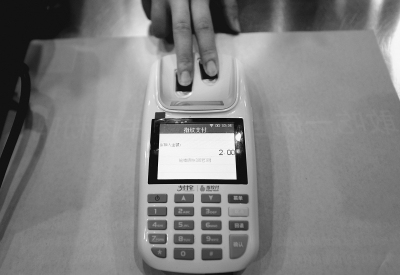


A customer pays for a Coke by scanning fingerprints at Funiutang restaurant, the first restaurant in Beijing to adopt fingerprint payment, on Sept.2, 2014. (Photo: Beijing Daily)
(ECNS) -- With fingerprint payments making headlines in China this week, experts say putting this technology into commercial use may not be as easy as first thought.
On September 1, Alipay, China's biggest online payment platform, teamed up with telecommunications giant Huawei to promote initial fingerprint payments via the latter's Mate 7 smartphone.
However, to use such biometric technology, users have to bear a big price.
Li Xiaolong, a deputy director at Huawei, said to add chip-level security and fingerprint readers to the phone could push up the Mate 7's production cost ten-fold.
At the IFA tech show held in Berlin this week, Huawei released the Mate 7 with a price tag of 499 euros ($645).
Limited offline occasions to use the technology is another hurdle to overcome. Right now, fingerprint technology is mostly used for online payments, and extending the use to offline transactions would be a huge boost to its popularization, said Alipay's senior director Kong Qi.
For example, after a customer pays for a hotel reservation online with the use of fingerprints, he or she could continue using these prints to check in and obtain a room key.
Also, market enthusiasm needs to be lifted, as concerns about security may hold back customers from using the technology.
Copyright ©1999-2018
Chinanews.com. All rights reserved.
Reproduction in whole or in part without permission is prohibited.